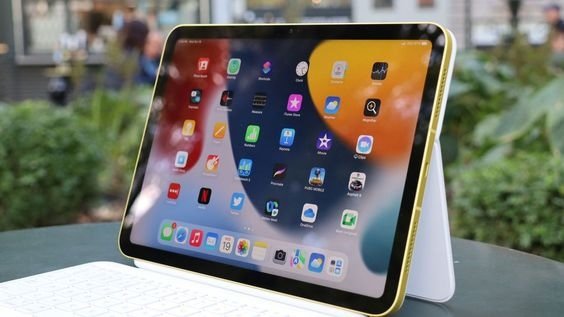Checking the battery health of an iPad is crucial to understanding how well the device’s battery is performing and determining whether it may need replacement. Unlike iPhones, which have a dedicated feature to monitor battery health built into iOS, iPads do not have this feature natively. However, there are multiple methods, including using third-party apps, checking battery cycles through a Mac or PC, and relying on Apple’s diagnostics or support services. Here’s an in-depth look at how you can check the health of your iPad’s battery and some important things to keep in mind.
Why Battery Health Matters
Every battery has a limited lifespan. Over time, lithium-ion batteries, like the one used in the iPad, chemically degrade, reducing their ability to hold a charge. Understanding battery health involves more than just knowing the percentage of battery life left at a given moment; it helps measure the battery’s maximum capacity compared to when it was new.
When battery health starts to decline, an iPad may not last as long on a single charge as it used to. It may also begin to show performance issues, such as unexpected shutdowns or a slower response. This is why checking battery health periodically is a good idea, especially if the device is a few years old or has been through extensive usage.
How to Check iPad Battery Health
Since Apple does not provide a built-in battery health checker for iPads, here are several methods you can use:
1. Using Third-Party Apps
One of the most straightforward ways to check iPad battery health is to use third-party apps designed for this purpose. These apps connect to your iPad and provide detailed information about the device’s battery health, including maximum capacity, cycle count, and other related data.
Some popular apps for checking battery health are:
- CoconutBattery (for Mac users): This app is free to download and provides detailed information about the battery of your iPad when you connect it to your Mac.
- iMazing (available for both Mac and PC): A user-friendly app that provides battery health information, including maximum charge capacity and cycle count.
- Battery Life Doctor (available on the App Store): While less detailed than desktop apps, this app can give you a rough idea of battery health directly from your iPad.
Steps to Use Third-Party Apps
- Download and install a suitable app such as CoconutBattery or iMazing.
- Connect your iPad to your Mac or PC using a USB cable.
- Open the app, and it should recognize your iPad and display details about the battery, including its health, charge cycles, and current capacity.
2. Using the iPad Analytics Data
Another method to check iPad battery health is through the device’s analytics data. While this method is more technical and doesn’t provide a quick percentage like iPhone’s battery health feature, it can still give valuable insights into your battery’s performance.
Steps to Check Battery Health via Analytics Data
- Open the Settings app on your iPad.
- Scroll down and tap on Privacy.
- Scroll down to the bottom and tap on Analytics & Improvements.
- Tap on Analytics Data. You’ll see a list of files, usually organized by date.
- Look for files named “log-aggregated.” Tap one of the most recent logs (this may take a few seconds to load).
- Copy the content of the file and paste it into a text editing app.
- Use the search function (usually available in most apps by pressing Ctrl+F or Command+F) and search for “batterycyclecount.” This number represents how many charging cycles your battery has gone through. Apple states that iPad batteries are designed to retain up to 80% of their original capacity after 1,000 full charge cycles.
By knowing the number of battery cycles your iPad has been through, you can estimate its health. If your cycle count is significantly high, and you’re noticing performance issues, it might be time to replace the battery.
3. Using a Mac or PC
If you don’t want to install third-party apps or dig into analytics data, you can use a Mac or Windows PC How to check ipad battery health?. While this method requires connecting your iPad to another device, it is a reliable option that gives you comprehensive battery details.
Steps to Check Battery Health via a Mac or PC
- Connect your iPad to a Mac or Windows PC using a USB cable.
- Open iTunes on your PC or Finder on a Mac running macOS Catalina or later.
- Select your iPad from the list of devices.
- Click on Summary or General, depending on your system.
- While this won’t show you battery health directly, you can explore third-party software like iMazing (as mentioned earlier) to get detailed battery statistics.
4. Visit an Apple Store or Contact Apple Support
If you’re unsure about using third-party apps or the analytics method, you can visit an Apple Store or authorized service provider to have them check the battery health for you. Apple technicians can run diagnostics on your iPad and give you an exact reading of its battery health, as well as advice on whether it’s time for a replacement.
Additionally, you can contact Apple Support online or via the phone and ask them to run a remote diagnostic on your iPad. This method is particularly useful if you don’t live near an Apple Store or if the issue is urgent.
5. Battery Performance in Daily Use
Even without checking the exact battery health percentage, you can keep an eye on some signs that indicate the battery may be degrading. For example:
- Frequent Charging: If you find that your iPad doesn’t hold a charge as long as it used to and you need to charge it more frequently, this could be a sign of battery wear.
- Unexpected Shutdowns: A degrading battery might cause your iPad to shut down unexpectedly, even when there’s battery life remaining.
- Overheating: If your iPad becomes unusually hot during regular use or while charging, it could be a sign that the battery is no longer functioning optimally.
- Slow Performance: In some cases, when an iPad’s battery health declines, you may notice performance issues. The device may feel sluggish or apps might take longer to open.
Understanding Battery Cycles
A “battery cycle” refers to the process of using 100% of your iPad’s battery. It doesn’t have to be all at once, though. For example, you could use 50% of the battery one day, recharge it to 100%, and then use another 50% the next day. That would count as one full cycle.
Apple’s iPads are designed to retain up to 80% of their original capacity after 1,000 full charge cycles. However, as your iPad ages and goes through more cycles, the battery’s ability to hold a charge diminishes. If your battery cycle count is nearing this threshold and you’re experiencing issues, it might be time for a replacement.
Finally to sum up
Monitoring your iPad’s battery health is an essential part of maintaining the longevity and performance of your device. While Apple doesn’t provide a built-in feature like on iPhones, there are several ways to check your iPad’s battery health, including using third-party apps, checking analytics data, or contacting Apple support. Understanding battery cycles and keeping an eye on how your iPad behaves during daily use can also give you a good idea of when the battery might need replacement.
By keeping track of your battery health, you can ensure your iPad runs smoothly and lasts longer before requiring a new battery or device upgrade.


